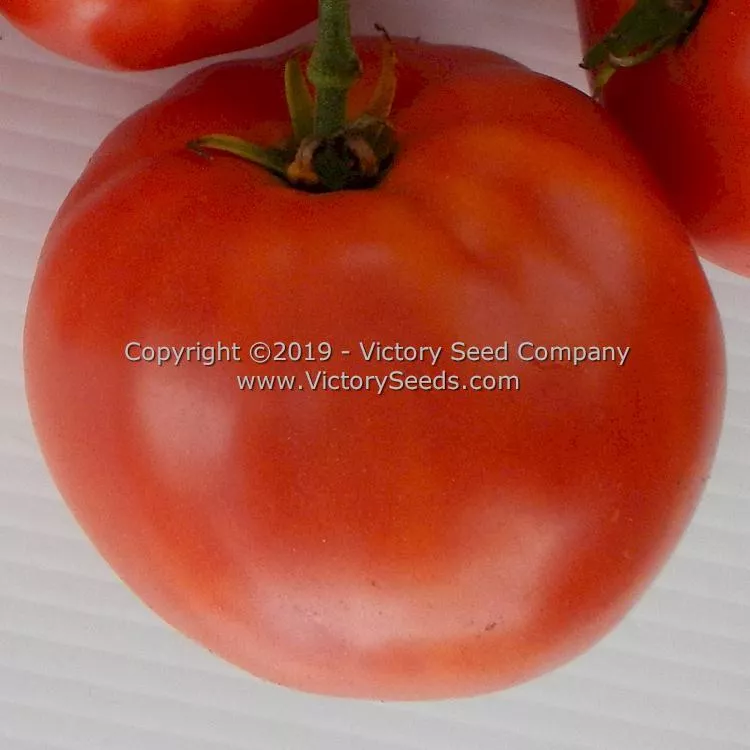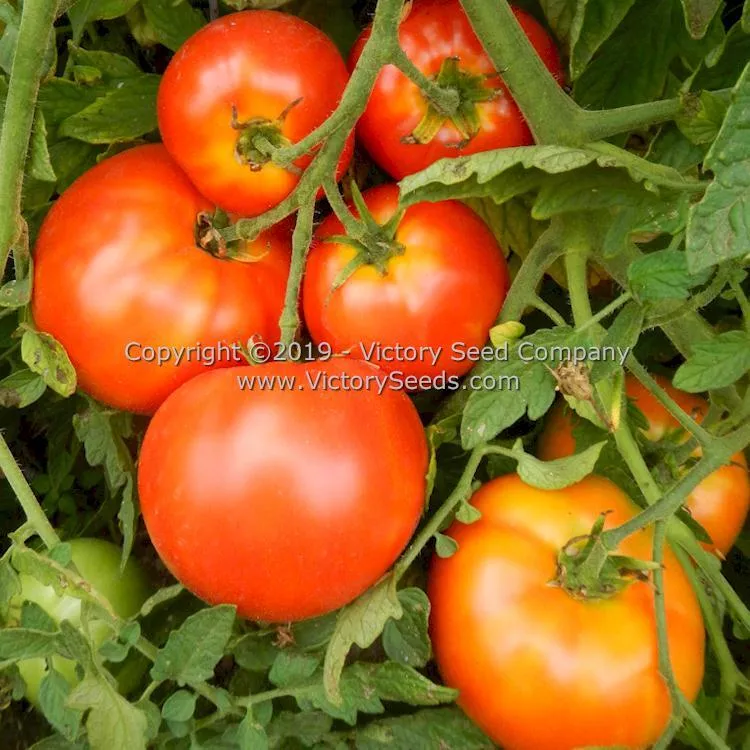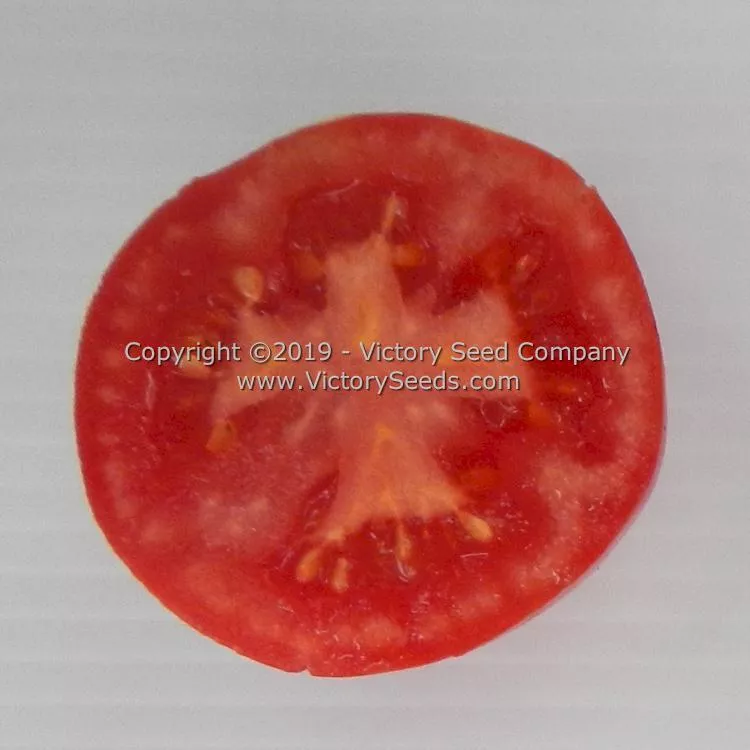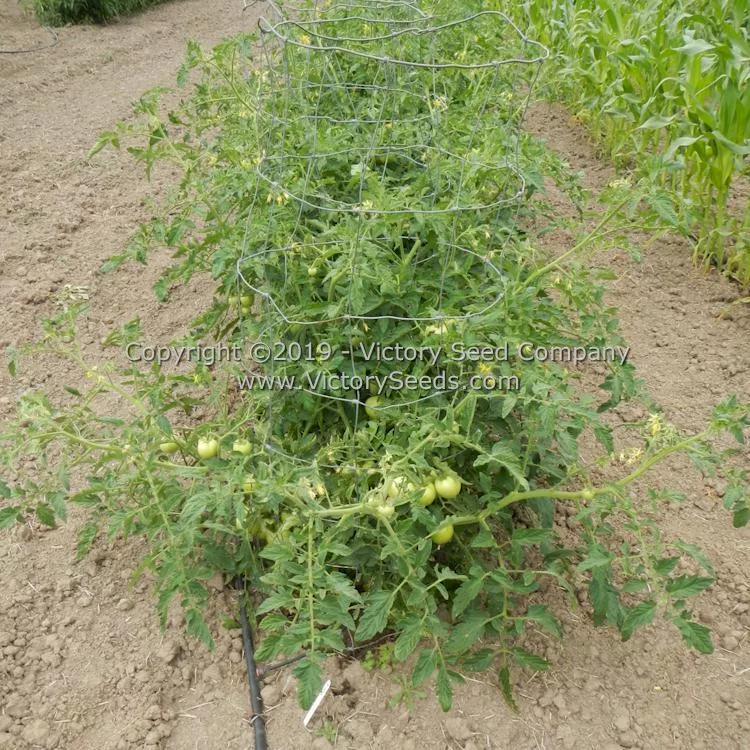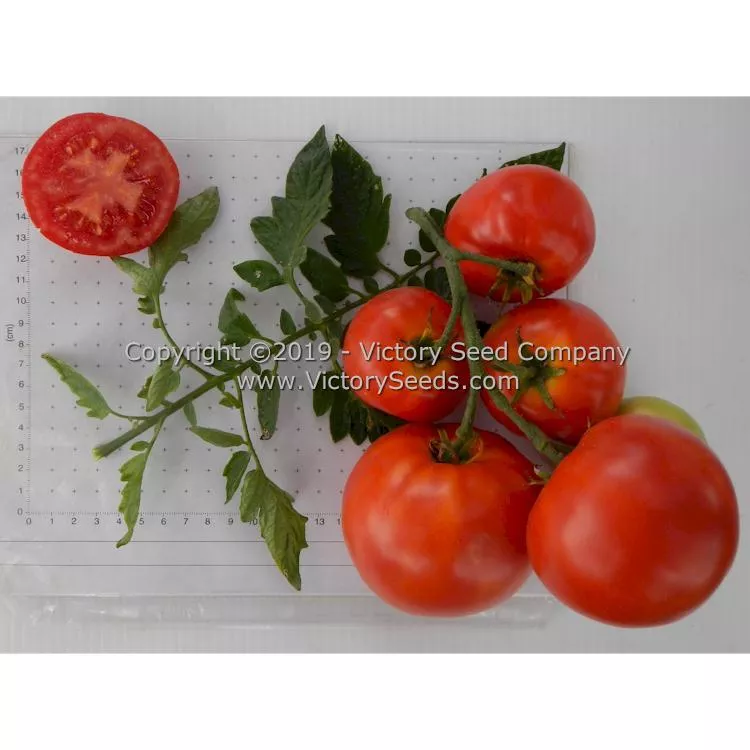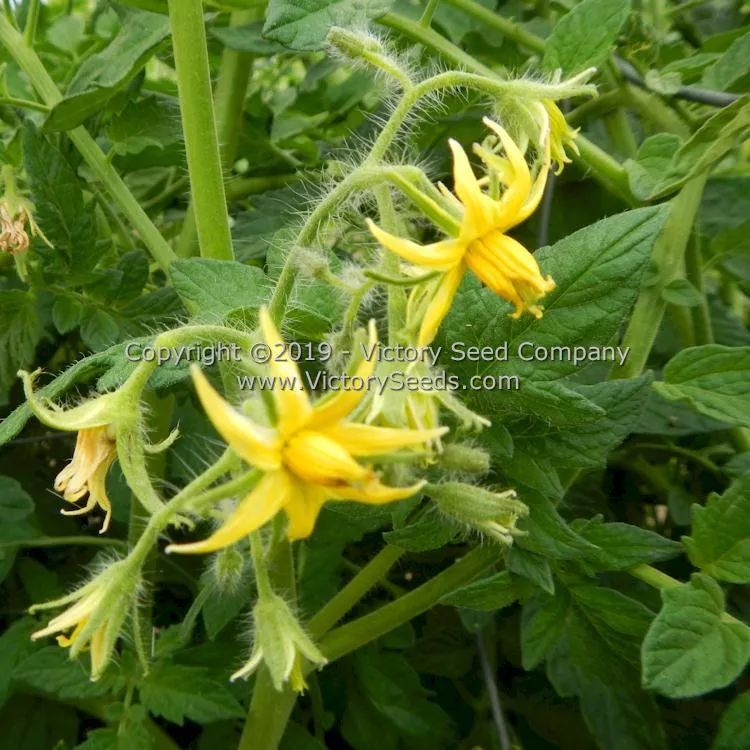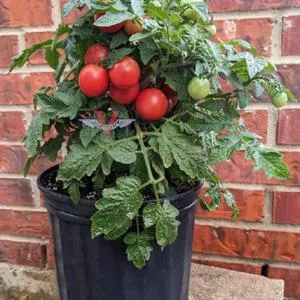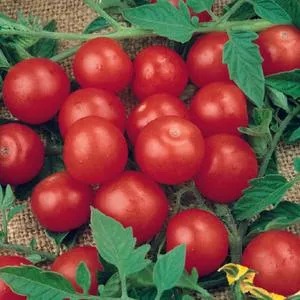





Sioux Tomato
Solanum lycopersicum
Price: $3.45
SKU: 3404841VERY IMPORTANT NOTE: This variety will be available again in early January, 2026. Please signup below to be notified when it becomes available. Click here to learn more about our seasonal products.
84 days, indeterminate - The regular leaf plants of 'Sioux' reach four to five feet in height and are very productive. Its smooth-skinned, red colored, firm but juicy fruit provide a nice, mild, slightly sweet, classic red-fruit flavor. As an all-purpose variety, it is an excellent choice for fresh slicing or used in salads, as well as for canning, freezing or processing into pastes and sauces. Although the fruit typically average about six ounces each and are globe to slightly flattened-globe in shape, we have noted some variability, in both size and shape, and will continue to rouge out those traits.
Bred at the Department of Horticulture, Nebraska Agricultural Experiment Station and the University of Nebraska, Lincoln from a cross between 'Stokesdale' and 'Allred'.[1,2] Originally developed for commercial tomato production, it exhibits dependable fruit setting in hot weather, and was considered generally suitable for home or fresh early market throughout Upper Mississippi Valley. In reality, it seems well-suited for nearly anyone's climate.
Introduced in 1944, the USDA noted in 1945 that the, "Sioux tomato distributed a year ago by the Nebraska Station proved to be an acceptable variety throughout most of Nebraska as well as in nearby States. Sioux produces consistently an unusually high percentage of vitamin C."[3] Our seed stock originated from USDA Accession Number PI 270210 which entered into the USDA's collection on December 7, 1960.
Bred at the Department of Horticulture, Nebraska Agricultural Experiment Station and the University of Nebraska, Lincoln from a cross between 'Stokesdale' and 'Allred'.[1,2] Originally developed for commercial tomato production, it exhibits dependable fruit setting in hot weather, and was considered generally suitable for home or fresh early market throughout Upper Mississippi Valley. In reality, it seems well-suited for nearly anyone's climate.
Introduced in 1944, the USDA noted in 1945 that the, "Sioux tomato distributed a year ago by the Nebraska Station proved to be an acceptable variety throughout most of Nebraska as well as in nearby States. Sioux produces consistently an unusually high percentage of vitamin C."[3] Our seed stock originated from USDA Accession Number PI 270210 which entered into the USDA's collection on December 7, 1960.
See also 'Super Sioux'
Fruit Color: Red
Harvest Timing: Main Crop / Mid-Season
Harvest Timing: Main Crop / Mid-Season
Sow seeds indoors (do not direct sow into the garden), using sterile seed starting mix, 6 to 8 weeks before your last expected frost date. Plant 1/4" deep, water lightly but keep moist until emergence.
Full light and cooler temps (60° to 70°) will help to prevent the seedlings from becoming too leggy. If plants become rootbound before you can safely set them into the ground, transplant them into larger pots.
Harden off plants before planting outside. Young plants are very susceptible to frost and sunburn damage. Avoid too much nitrogen. Water evenly but not in excess.
Click here to view our full tomato growing guide.
Full light and cooler temps (60° to 70°) will help to prevent the seedlings from becoming too leggy. If plants become rootbound before you can safely set them into the ground, transplant them into larger pots.
Harden off plants before planting outside. Young plants are very susceptible to frost and sunburn damage. Avoid too much nitrogen. Water evenly but not in excess.
Click here to view our full tomato growing guide.
Informational References:
- "Vegetable Cultivar Descriptions for North America – Tomato (S-Z), Lists 1-27 Combined," Edited by John W. Scott, Gulf Coast REC, University of Florida, Bradenton, FL.
- "Report on the Agricultural Experiment Stations, 1944," USDA, Dept. of Experiment Stations, January, 1945.
- "Report on the Agricultural Experiment Stations, 1945," USDA, Dept. of Experiment Stations, January, 1946.
Customer Reviews:
Do you have experience with this one? 📝 📣 Write a review!
No reviews have been posted yet.

